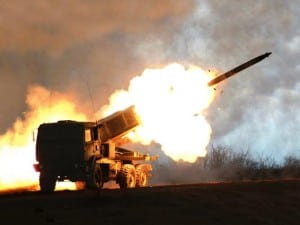
The Army is expecting to save nearly $150 million if it’s able to award multi-year contracts in fiscal year 2024 for GMLRS and Patriot Advanced Capability (PAC)-3 missiles, according to newly released Pentagon documents. The Pentagon’s comptroller’s office has detailed the Army’s multi-year procurement (MYP) requests for the two munitions, which include a potential four-year, nearly $2.6 billion deal for 18,000 GMLRS rockets and a three-year, $2.58 billion award for up to 1,000 PAC-3 Missile Segment Enhanced (MSE) missiles. Army…

 By
By 











